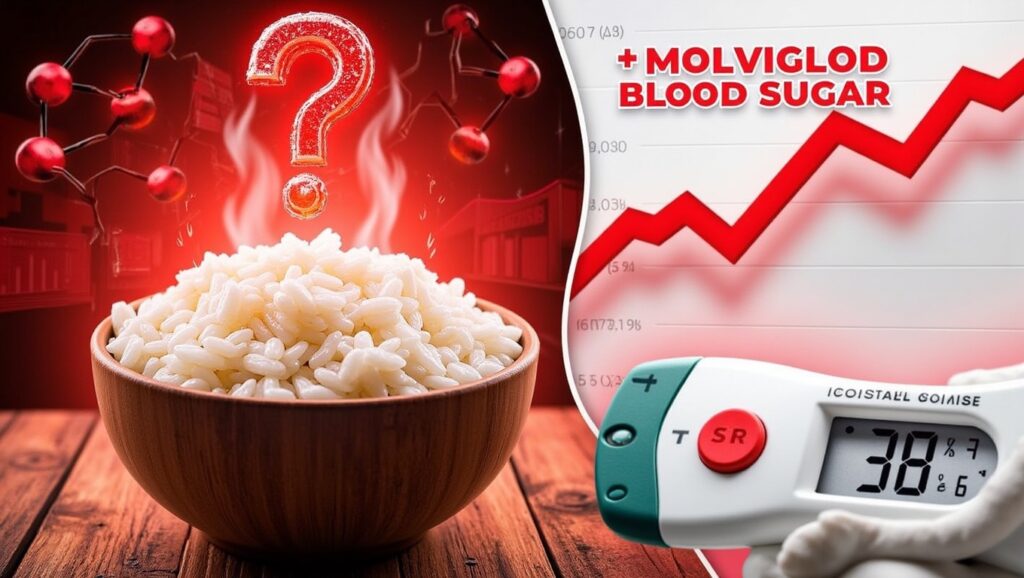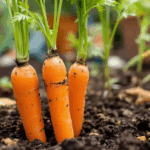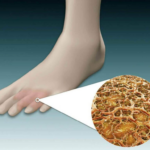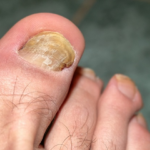
📢 Important Tip: Don’t miss the amazing natural products I’ve selected for you at the end of this post! They can make a huge difference in managing blood sugar and improving your overall health.
Rice is a staple food for millions of people worldwide. It’s versatile, easy to prepare, and pairs well with countless dishes. However, if you’re mindful of your blood sugar levels, you might have wondered: Does rice spike blood sugar? And can cooking and cooling it really make a difference?
In this post, we’ll explore how rice affects blood sugar, the science behind cooking and cooling rice, and practical tips for enjoying rice without worrying about extreme blood sugar spikes.
Does Rice Spike Blood Sugar?
The short answer is: yes, rice can spike blood sugar levels, especially white rice. Here’s why:
- High Glycemic Index (GI): White rice has a high GI, meaning it’s quickly digested and absorbed, causing rapid increases in blood sugar levels.
- Low Fiber Content: White rice is stripped of its bran and germ during processing, removing most of its fiber. Fiber helps slow the absorption of glucose into the bloodstream, so less fiber means quicker spikes.
- Type of Rice Matters: Not all rice is equal. For example:
- White rice has a higher GI (70–90).
- Brown rice has a moderate GI (50–60) due to its fiber content.
- Basmati rice and wild rice often have a lower GI than standard white rice.
If you have diabetes or are watching your blood sugar, eating large amounts of white rice can lead to blood sugar swings that affect energy levels and insulin sensitivity.
Does Cooking and Cooling Rice Lower the Spike?
Surprisingly, yes! The process of cooking and cooling rice can reduce its impact on blood sugar. This happens because of the formation of resistant starch, a type of carbohydrate that the body cannot easily digest.
How It Works
- Cooking: When rice is cooked, the starches gelatinize, making them more accessible to digestion.
- Cooling: When the cooked rice is cooled, some of the starches retrograde into a form that resists digestion. This resistant starch acts more like fiber, slowing down the absorption of glucose.
- Reheating: Even if the rice is reheated after cooling, the resistant starch remains intact, preserving its blood sugar benefits.
How Much Can It Help?
Studies have shown that cooking and cooling rice can reduce its glycemic index by up to 10–15%. While this may not transform white rice into a low-GI food, it does make it a more blood sugar-friendly option compared to freshly cooked rice.
Practical Tips for Managing Blood Sugar When Eating Rice
If you want to enjoy rice without worrying about significant blood sugar spikes, here are some strategies:
1. Choose the Right Type of Rice
Opt for varieties with lower glycemic indices, such as:
- Brown rice
- Basmati rice
- Wild rice
These types contain more fiber and have a slower effect on blood sugar levels.
2. Cook and Cool Your Rice
- Cook rice as usual and let it cool in the refrigerator for at least 12 hours.
- Reheat it before eating, or enjoy it cold in dishes like salads or stir-fries.
3. Pair Rice with Protein and Fat
Combining rice with protein (like chicken, fish, or tofu) and healthy fats (like avocado, nuts, or olive oil) helps slow digestion and reduces blood sugar spikes.
4. Watch Your Portions
A single serving of cooked rice is about 1/3 to 1/2 cup, which is often smaller than what most people serve themselves. Stick to this portion size to minimize its impact on blood sugar.
5. Experiment with Additives
Adding apple cider vinegar or lemon juice to your rice dishes can improve insulin sensitivity and further moderate blood sugar levels.
Conclusion: Can You Enjoy Rice Without Spiking Blood Sugar?
Rice can spike blood sugar levels, especially if it’s white and consumed in large quantities. However, by making smart choices—like opting for whole-grain varieties, pairing rice with protein and fats, and leveraging the cooking-and-cooling method—you can enjoy rice as part of a balanced diet without significant blood sugar concerns.
What’s your go-to strategy for eating rice while managing blood sugar? Share your tips in the comments below—we’d love to hear from you!
📢 Important Tip: Don’t miss the amazing natural products I’ve selected for you at the end of this post! They can make a huge difference in managing blood sugar and improving your overall health. 👇
💡 Looking for natural ways to boost your health?
I’ve selected amazing supplements that can help with blood sugar control and overall wellness. Click the links below to check them out:
🔗 [Natural Supplement 1 -GLUCO SHIELD PRO – Blood Sugar Control]
✅ Official WebSite + Discount Gluco Shield Pro

🔗 [Natural Supplement 2 SUGAR DEFENDER – Resistant Starch & Digestive Health]
✅ Official WebSite + Discount Sugar Defender

🔗 [Natural Supplement 3 Glucotrust Blood Sugar Supplement Improved Insulin Sensitivity]


Dr. Sarah Miller is widely recognized as an influential leader in the healthcare field, with a career marked by excellence, innovation, and dedication to improving human well-being. Combining exceptional academic knowledge, clinical experience, and a deep commitment to research, she has become a reference in her specialty.






